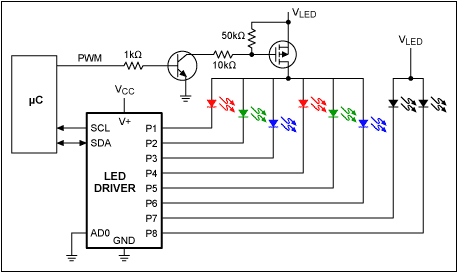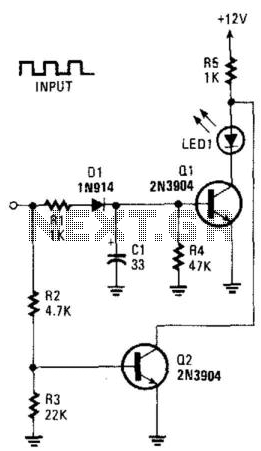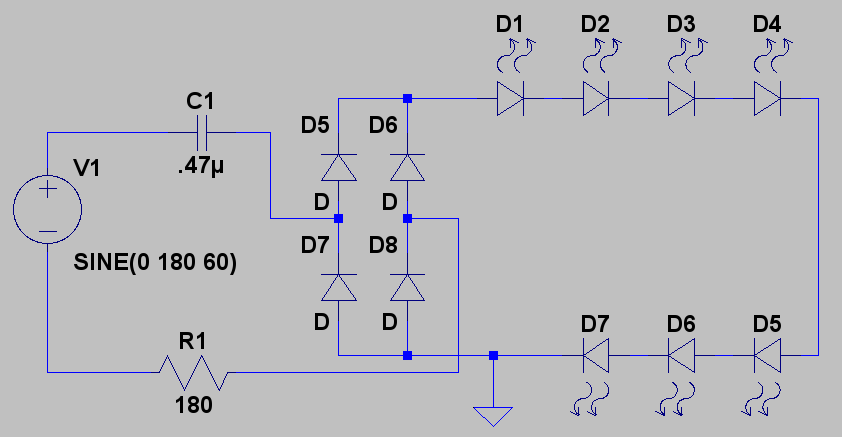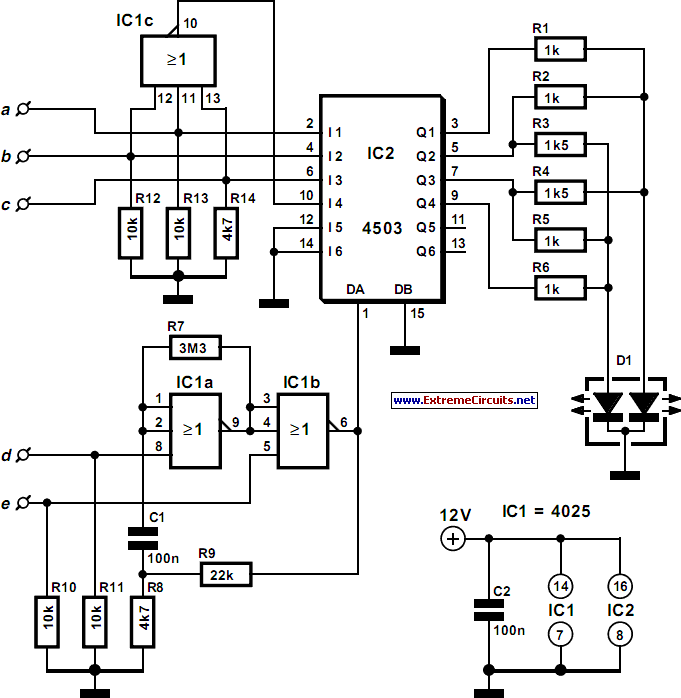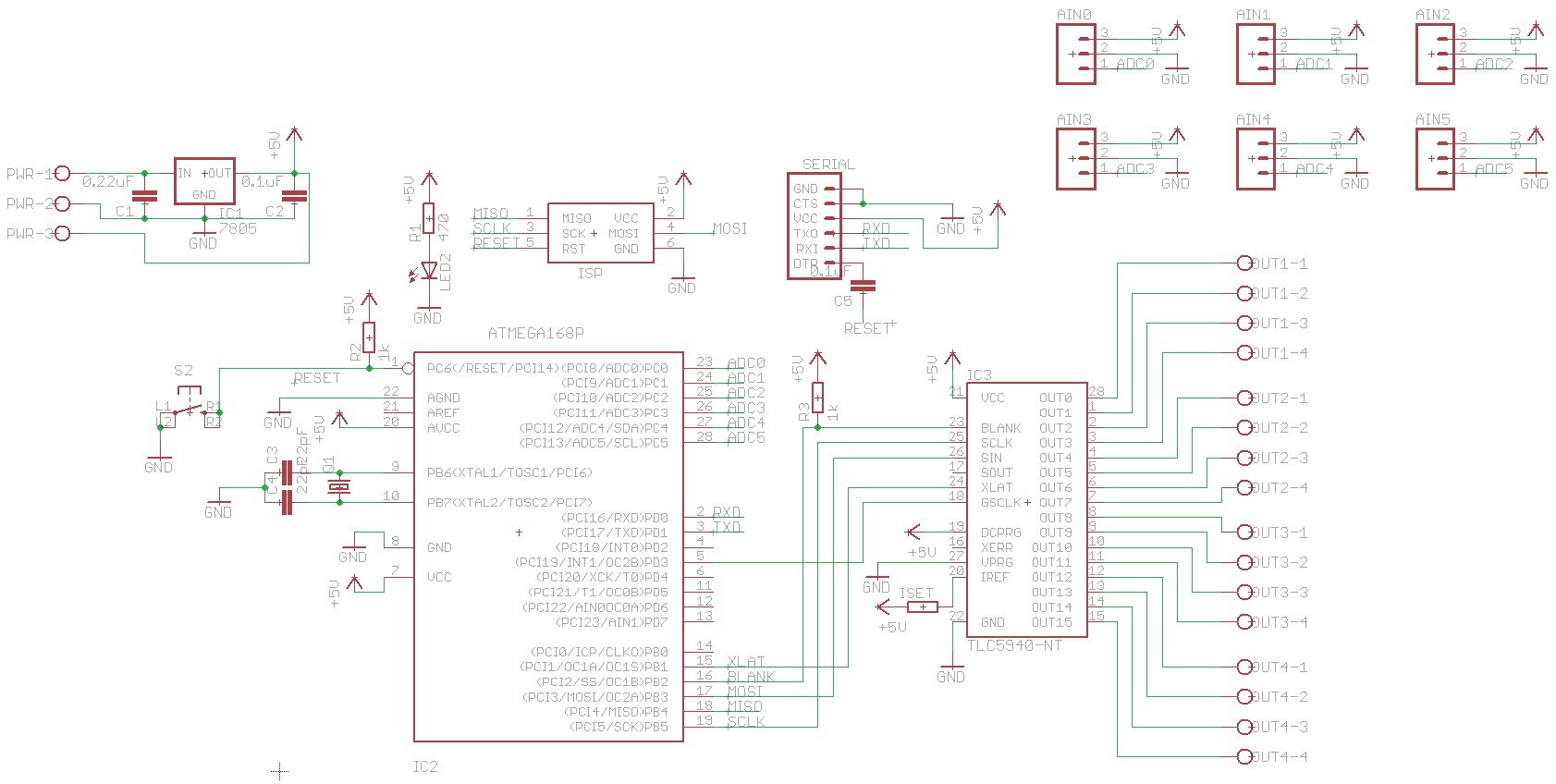
led interfacing with tms320f2812 tyro
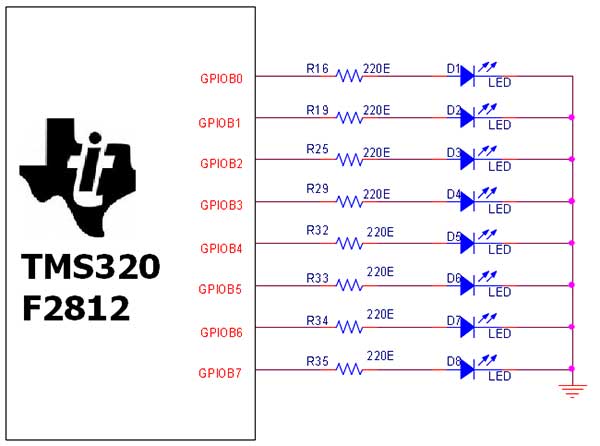
The TMS320F2812 Evaluation Board is specifically designed for developers in the digital signal processing (DSP) field, as well as for beginners. The F2812 kit is structured to allow easy access to all the features of the DSP. The TMS320F2812 evaluation board includes eight LEDs connected to the DSP's general-purpose I/O pins. The anode of each LED connects to ground, while the cathode connects to the port through a 220-ohm resistor. To illuminate an individual LED, the corresponding port signal must be driven high.
The TMS320F2812 Evaluation Board serves as a versatile platform for experimenting with and developing DSP applications. The board is equipped with a TMS320F2812 DSP chip, which is known for its high-performance processing capabilities, particularly in real-time applications. Each of the eight LEDs on the board provides a visual indication of the status of the associated I/O pins, facilitating easy debugging and monitoring of signal states during development.
The connection of the LEDs through 220-ohm resistors ensures that the current flowing through each LED is limited to safe levels, preventing damage to the components. When a port signal is set to high, the corresponding LED lights up, indicating that the pin is active. This feature is particularly useful for developers testing various I/O configurations and functionalities.
In addition to the LED indicators, the evaluation board supports a range of peripheral interfaces, including serial communication ports, analog-to-digital converters (ADCs), and timers, which can be utilized to enhance the development of complex DSP applications. The board's design allows for easy integration with external components, providing flexibility for various project requirements.
Overall, the TMS320F2812 Evaluation Board is an invaluable tool for both novice and experienced developers looking to explore the capabilities of digital signal processing technology. Its user-friendly design and comprehensive feature set make it an ideal choice for a wide range of educational and professional applications in the DSP domain.The TMS320F2812 EVALUATION BOARD is specially desgined for developers in dsp field as well as beginners. The F2812 kit is designed in such way that all the possible features of the DSP will be easily used by the everyone.
The TMS320F2812 EVB board has Eight LED Connected with Dsp general purpose I/O pins. The Anode of each LED connects to ground a nd Cathode of each LED connects port via 220 © resistor. To light an individual LED, drive the associated port signal to High. 🔗 External reference
The TMS320F2812 Evaluation Board serves as a versatile platform for experimenting with and developing DSP applications. The board is equipped with a TMS320F2812 DSP chip, which is known for its high-performance processing capabilities, particularly in real-time applications. Each of the eight LEDs on the board provides a visual indication of the status of the associated I/O pins, facilitating easy debugging and monitoring of signal states during development.
The connection of the LEDs through 220-ohm resistors ensures that the current flowing through each LED is limited to safe levels, preventing damage to the components. When a port signal is set to high, the corresponding LED lights up, indicating that the pin is active. This feature is particularly useful for developers testing various I/O configurations and functionalities.
In addition to the LED indicators, the evaluation board supports a range of peripheral interfaces, including serial communication ports, analog-to-digital converters (ADCs), and timers, which can be utilized to enhance the development of complex DSP applications. The board's design allows for easy integration with external components, providing flexibility for various project requirements.
Overall, the TMS320F2812 Evaluation Board is an invaluable tool for both novice and experienced developers looking to explore the capabilities of digital signal processing technology. Its user-friendly design and comprehensive feature set make it an ideal choice for a wide range of educational and professional applications in the DSP domain.The TMS320F2812 EVALUATION BOARD is specially desgined for developers in dsp field as well as beginners. The F2812 kit is designed in such way that all the possible features of the DSP will be easily used by the everyone.
The TMS320F2812 EVB board has Eight LED Connected with Dsp general purpose I/O pins. The Anode of each LED connects to ground a nd Cathode of each LED connects port via 220 © resistor. To light an individual LED, drive the associated port signal to High. 🔗 External reference
